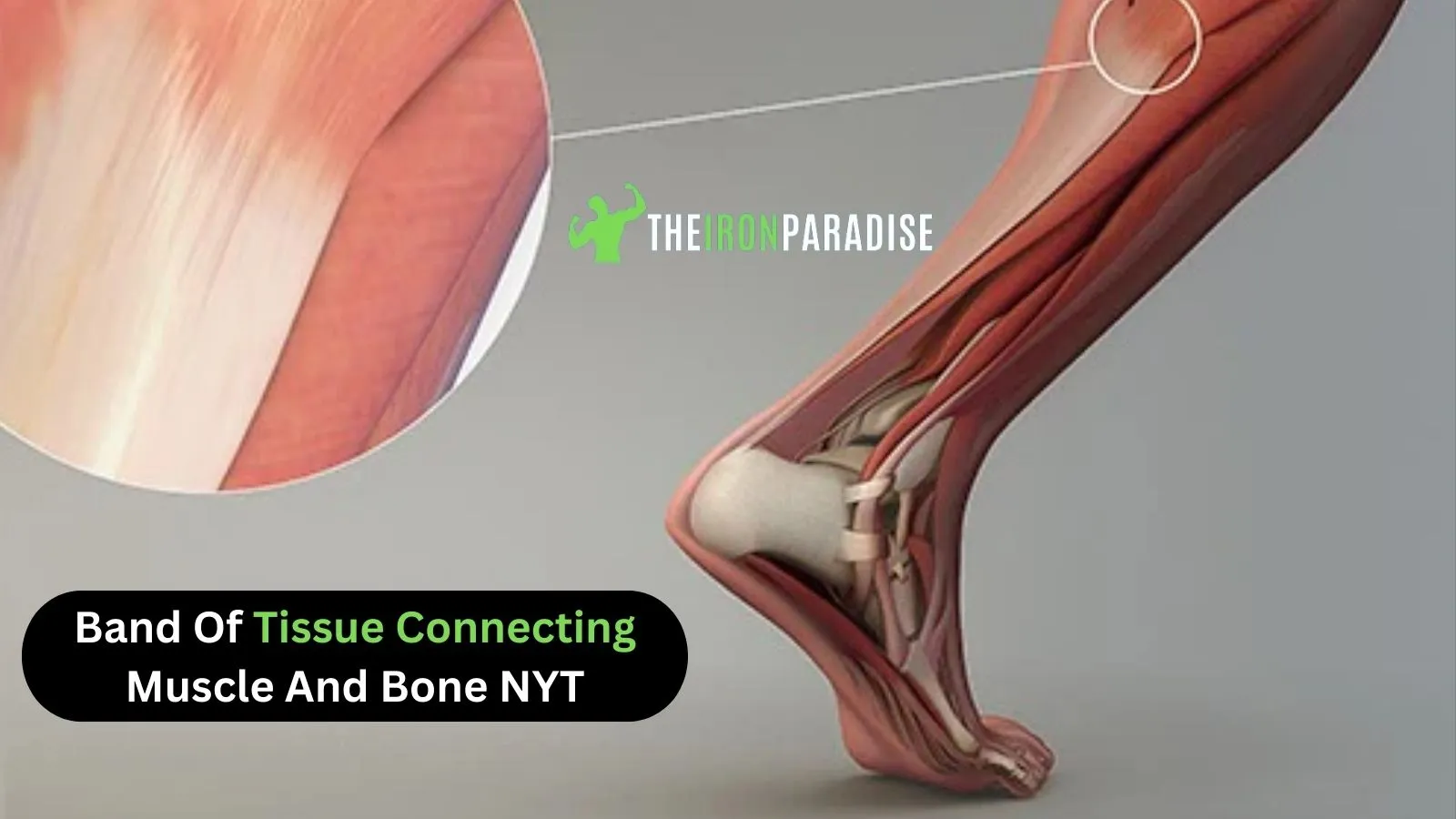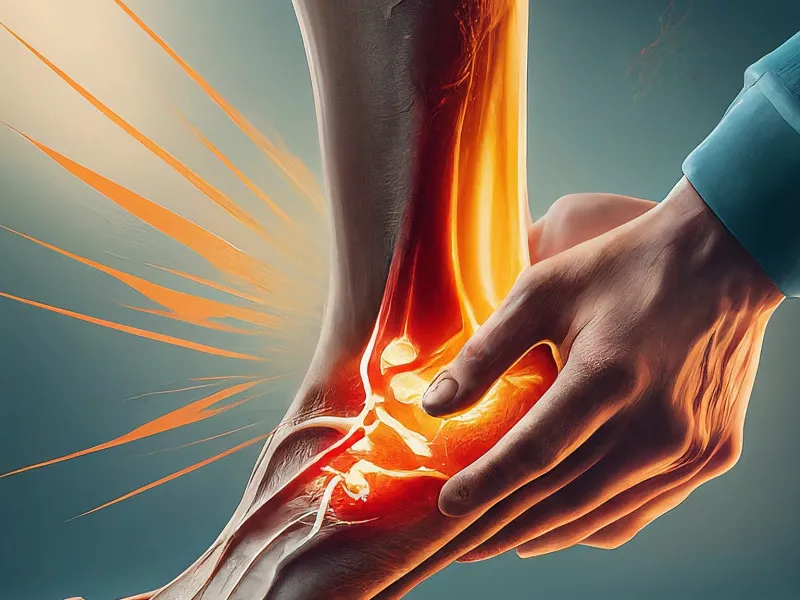
Band Of Tissue Connecting Muscle And Bone NYT, Attaching muscle to bone, a tendon is a fibrous connective tissue. Tendons can also fasten muscles to organs like the eyeball. The bone or structure moves under the action of a tendon.
Band Of Tissue Connecting Muscle And Bone NYT

One often used anatomical phrase for the particular hint "Band of tissue connecting muscle and bone". This clue's solution is "Tendon". Tendons are fibrous connective structures that link muscles to bones therefore enabling the force and movement transfer.
What is the band of tissue connecting muscle to bone nut?
White fibrous tissue makes the tendon structure. They link bone to muscle.
What is the band that connects muscle?
Attaching muscle to bone, a tendon is a fibrous connective tissue type. Tendons can also fasten muscles to organs including the eyeball. The bone or structure moves under the direction of a tendon.
Band Of Tissue Connecting Muscle And Bone NYT: Understanding Tendons
The musculoskeletal system depends critically on tendons. Made of dense, fibrous connective tissue, they are immensely strong and can resist the tension generated during muscular contraction. Tendons enable mobility and assist absorb shock in addition to tying muscles to bones.
What is fascia?
Surrounding belt of tissue linking Band Of Tissue Connecting Muscle And Bone NYT, bones, nerves, and blood vessels, fascia is a thin, durable layer of connective tissue. This vital tissue creates a continuous web all over the body that helps our musculoskeletal system to be aligned and integrity intact. Mostly made of collagen fibers, which provide strength and flexibility and enable the fascia to resist tension and pressure,
Fascia's Part in the Body
Fascia actively helps with movement and posture; it is not only a passive framework. It preserves the proper alignment of bones and muscles, therefore enabling effective movement. Fascia also works as a shock absorber, therefore lessening the impact on the band of tissue between muscle and bone nyt and bones during physical exercise. Furthermore essential for balance and coordination is proprioception, the body's capacity to detect its position in space.
Read Also: What exercises are best for your health?
Muscle to Bone: Frontal Connections
Usually by means of tendons, the fascia is the connective tissue connecting muscles to bones. Highly concentrated with collagen fibers, tendons are specialized kinds of fascia that are quite strong and able of withstanding great tensile stresses. This relationship lets muscles send force to bones, hence facilitating movement. When you flex your bicep, for instance, the tendon connected to your forearm pulls the bone forward and generates an elbow bending action.
Various forms of fascia band of tissue connecting muscle and bone nyt
Three main forms of fascia are superficial, deep, and visceral.
Found just under the skin, this kind of fascia works as a protective cushion, stores fat and water, and offers insulation.
Deep Fascia is Deep fascia is dense and fibrous; found encircling muscles, bones, and nerves. It is quite important for muscular performance since it gives muscles a sliding and gliding environment.
Surrounding internal organs, visceral fascia keeps them in their place within the body cavies and supports them.
Fascia and Moveability Efficiency Band of tissue linking muscle and bone nyt
Good movement depends on the fascial system. Healthy fascia are flexible, which lets band of tissue linking muscle and bone nyt move freely and bones to remain aligned. But a stiff or tight fascia can limit movement, which causes muscle imbalances, joint dysfunction, and discomfort. Therefore, general physical well-being depends on the fascial system being kept in health.
Factors Affecting Fascial Integrity

Several elements can influence the condition of the fascial system:
Inactivity: Lack of movement can stiffen and less elasticize the fascia.
Repetitive motions or overtraining can cause fascial adhesions—where layers of fascia cling together to limit movement.
Trauma to the body can harm the fascia and produce scar tissue, therefore impeding mobility.
Fascia must remain hydrated if it is to be flexible and functional. The fascia could get stiff and less sensitive without enough fluids.
Keeping Good Fascia Band of tissue linking muscle and bone nyt
Regular mobility and stretching are absolutely vital for preserving good fascia in your body. Dynamic stretching, pilates, and yoga among other exercises assist maintain the fascia flexible and strong. Hydration is also very important since fascia depends on water to remain pliable. Additionally helpful in lowering fascial tension and avoiding adhesions is massage treatment incorporating myofascial release.
Fascial Dysfunction: Consequences
A range of tissue connects muscle and bone nyt from fascial dysfunction. Tight or limited fascia can lead to compensatory patterns of movement, which can strain other areas of the body, and produce chronic discomfort, therefore limiting range of motion. Typical disorders linked to fascial dysfunction are myofascial pain syndrome, IT band syndrome, and plantar fasciitis.
Read Also: 6 Best Calisthenics Shoulder Exercises: Improve Your Mobility And Strength
Therapy Choices for Fascial Problems
Usually treating fascial problems combines physical therapy, manual therapy, and exercise.
A physical therapist can walk you through activities meant to increase flexibility, strengthen band of tissue linking Band Of Tissue Connecting Muscle And Bone NYT and bone nyt, and correct movement patterns.
Manual therapy can help to remove fascial adhesions and restore normal function using techniques including deep tissue massage and myofascial release.
Maintaining good fascia depends mostly on regular, focused exercise. Particularly stretching exercises help to increase fascial flexibility and avoid stiffness.
Conclusion
Band of tissue tying together bone and Band Of Tissue Connecting Muscle And Bone NYT Anyone interested in human anatomy, movement, or health must first understand how fascia links muscles and bones. Maintaining the structural integrity of the body, allowing effective movement, and sustaining general well-being depends critically on this connective tissue. Your body will remain flexible, strong, and pain-free if you act to preserve good fascia by keeping active, hydrated, and by including regular stretching into your program
FAQs: Band Of Tissue Connecting Muscle And Bone NYT
How to keep tendons healthy?
Frequent physical activity can reduce your risk of tendinitis and help maintain muscles, bones, and tendons robust. To avoid hurting yourself, take careful not to overdo it though. "Keep joints limber," Flatow suggests.
What are the 4 stages of tendon healing?
Generally speaking, the body's several tissues—muscle, tendons, ligaments, cartilage, etc.—follow the four stages of healing—bleeding, inflammation, proliferation and remodelling. The damaged tissue will be killed and replaced by live tissue in the body at these phases.
What is the best food for tendon repair?
Eggs, meat, fish, seafood, nuts, seeds ( pumpkin, sunflower, linseed, hemp, sesame including tahini), dairy produce, mushrooms mixed with green leafy vegetables.



